
|
Astronomy Picture Of the Day (APOD)
 Opportunity After the Storm
Opportunity After the Storm
4.10.2018
On Mars dust storms can't actually blow spacecraft over, but they can blot out the Sun. Over three months ago a planet-wide dust storm caused a severe lack of sunlight for the Mars rover Opportunity at its location near the west rim of Endeavor crater.
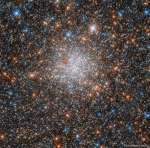 NGC 1898: Globular Cluster in the LMC
NGC 1898: Globular Cluster in the LMC
3.10.2018
Jewels don't shine this bright -- only stars do. And almost every spot in this glittering jewel-box of an image from the Hubble Space Telescope is a star. Now some stars are more red than our Sun, and some more blue -- but all of them are much farther away.
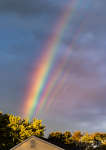 Supernumerary Rainbows over New Jersey
Supernumerary Rainbows over New Jersey
2.10.2018
Yes, but can your rainbow do this? After the remnants of Hurricane Florence passed over Jersey Shore, New Jersey, USA last month, the Sun came out in one direction but something quite unusual appeared in the opposite direction: a hall of rainbows.
 The First Rocket Launch from Cape Canaveral
The First Rocket Launch from Cape Canaveral
1.10.2018
A new chapter in space flight began in 1950 with the launch of the first rocket from Cape Canaveral, Florida: the Bumper V-2. Featured here, the Bumper V-2 was an ambitious two-stage rocket program that topped a V-2 missile base with a WAC Corporal rocket.
 The Lonely Neutron Star in Supernova E0102 72.3
The Lonely Neutron Star in Supernova E0102 72.3
30.09.2018
Why is this neutron star off-center? Recently a lone neutron star has been found within the debris left over from an old supernova explosion. The "lonely neutron star" in question is the blue dot at the center of the red nebula near the bottom left of E0102-72
 55 Nights with Saturn
55 Nights with Saturn
29.09.2018
For 55 consecutive nights Mediterranean skies were at least partly clear this summer, from the 1st of July to the 24th of August 2018. An exposure from each night was incorporated in this composited telephoto and telescopic image to follow bright planet Saturn as it wandered through the generous evening skies.
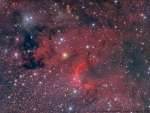 The Light, the Dark, and the Dusty
The Light, the Dark, and the Dusty
28.09.2018
This colorful skyscape spans about two full moons across nebula rich starfields along the plane of our Milky Way Galaxy in the royal northern constellation Cepheus. Near the edge of the region's massive...
 M33: Triangulum Galaxy
M33: Triangulum Galaxy
27.09.2018
The small, northern constellation Triangulum harbors this magnificent face-on spiral galaxy, M33. Its popular names include the Pinwheel Galaxy or just the Triangulum Galaxy. M33 is over 50,000 light-years in diameter, third largest in the Local Group of galaxies after the Andromeda Galaxy (M31), and our own Milky Way.
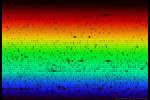 The Suns Spectrum with its Missing Colors
The Suns Spectrum with its Missing Colors
26.09.2018
It is still not known why the Sun's light is missing some colors. Here are all the visible colors of the Sun, produced by passing the Sun's light through a prism-like device.
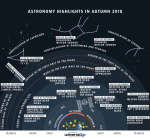 Highlights of the North Autumn Sky
Highlights of the North Autumn Sky
25.09.2018
What can you see in the night sky this season? The featured graphic gives a few highlights for Earth's northern hemisphere. Viewed as a clock face centered at the bottom, early (northern) autumn sky events fan out toward the left, while late autumn events are projected toward the right.
|
January February March April May June July August September October November December |
|||||||||||||||||||||||||||||||||||||||||||||||||